Paris spring/summer 2016 shows serve up some rich confections
The shows reflect a world in upheaval, and an industry facing reality. At least, of a fashion, says Alexander Fury
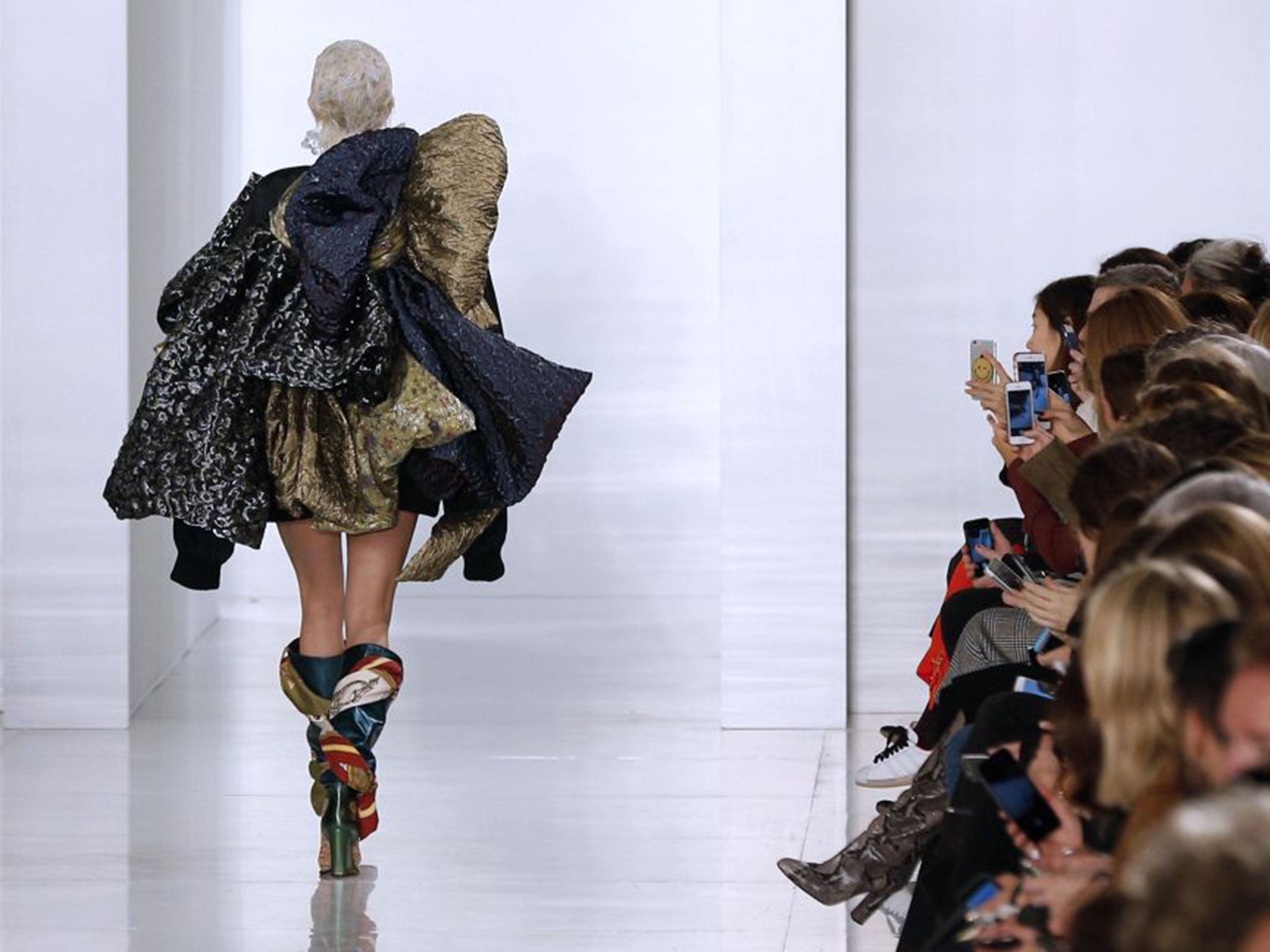
"Make do and mend" was the title of a pamphlet issued to British housewives during the Second World War. It detailed useful tips on how to be frugal and stylish in times of hardship by repurposing, recycling and reusing. Strangely, you felt echoes of that way of thinking at the spring/summer 2016 haute couture, in the expensive and extraordinary clothes created by a handful of houses for a fistful of clients.
Why strange? Well, although times may be hard, the few who are probably insulated from the vagaries of global stock market fluctuations, oil prices tanking, or even meteorological insecurity, are the tiny, climate-controlled percentage that buy haute couture. Oxfam estimates that 62 people hold wealth equivalent to half the world's population: I'm betting those 62 number amongst the clientele of the couture, generously estimated at 2,000. And if the world's population stands at, roughly, 7.4 billion, we're talking less the 1 per cent than the 0.00002 per cent, at even the most optimistic. At Elie Saab, where princesses sat front row and applauded a silvery recreation of the Indian raj in a Maharani's ransom of embroidery, a few models carried filigree silver purses. They were empty. I think that was a first for the couture.
Nevertheless, the designers creating couture were this time aware of what was going on in the outside world. The haute couture may be Paris fashion's oldest institution – but it needs new blood, new ideas, and fresh outlooks to survive. Otherwise, its houses would be mausoleums to a staid form of luxury no one really wants to purchase. Craft isn't enough – clothes have to be imbued with a sense of the now to appeal.
That was always the idea, for instance, of Raf Simons's work at Christian Dior. Simons sought to bring haute couture into the 21st century. His first Dior show opened with the house's Bar jacket transposed to slick trouser suits. Simons left Dior back in October, and the collection staged on Monday was overseen by a half-dozen strong team headed by a named duo, Serge Ruffieux and Lucie Meier, who had worked under Simons.
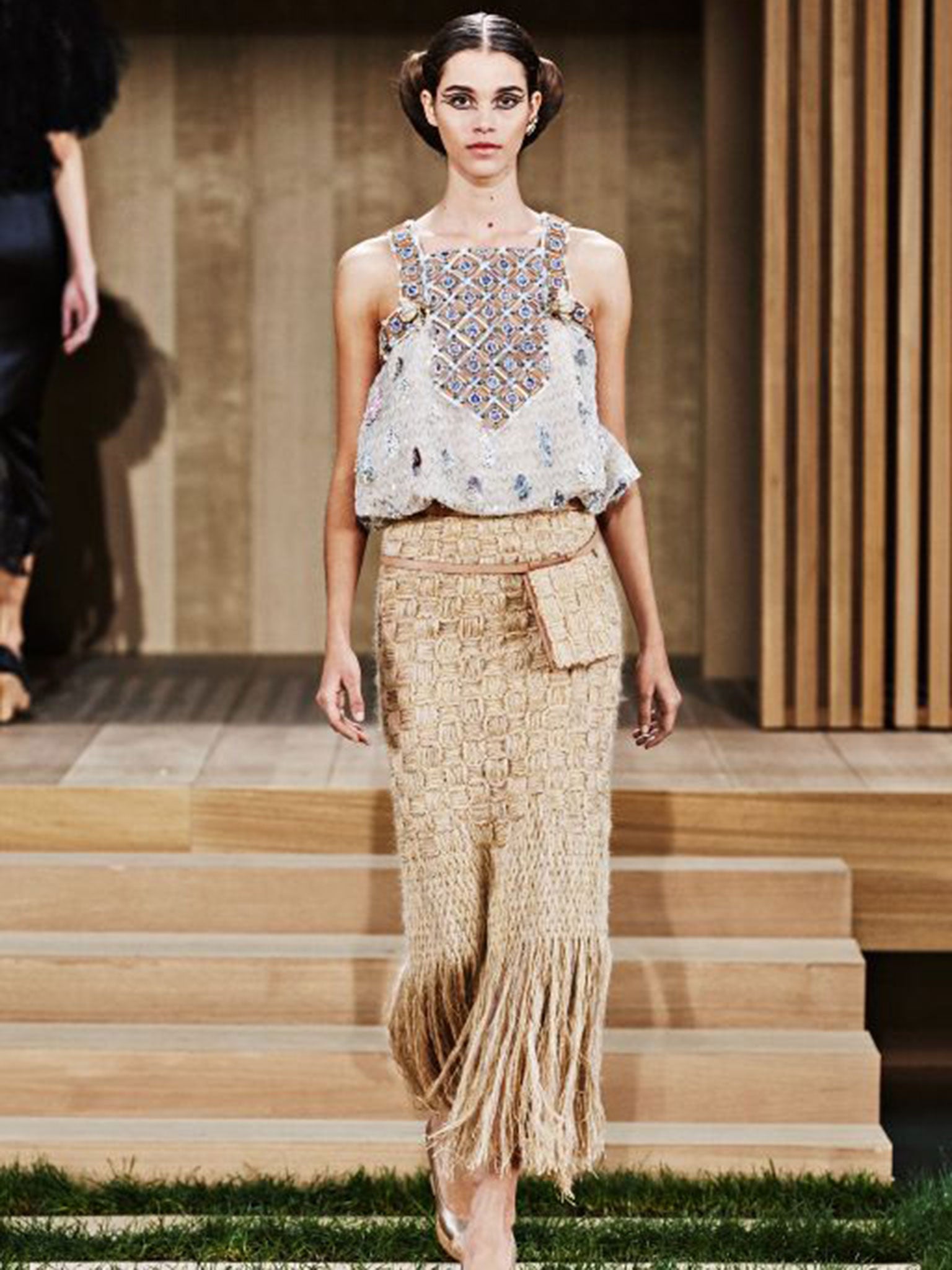
It would be interesting to see the fractured Dior couture collection – some clothes good, some clothes bad – as reflective of a wider cultural panorama of upheaval, confusion and conflict. However, it was more insular, mostly indicative of the difficulties facing Dior who will show, at least, a ready-to-wear collection in March before the new artistic director takes control of its womenswear. Making do and mending was a thread that ran through the clothes, too, which played with patchwork and surface textures, with embroideries and shapes reminiscent of the modernist aesthetic of Simons, and with plenty of reiterations of the Bar jacket, a silhouette recognisably Dior regardless of designer. This collection wasn't timid, which was in its favour – the staging was grand, and some of the garments were good, particularly the long, lean coat dresses either bell-shaped or nipped into Dior's hourglass.
A friend, who mixes in those 0.00002 per cent circles, told me he knew a woman who had ordered three pieces. Sales aren't the goal at haute couture – the concentrated man-hours necessary to make these clothes (the opening look at Valentino took 2,000 hours to construct entirely by hand) means they turn barely any profit; many run at a loss. But sales make good PR – it was great, for instance, for Dior to crow that Simons's 2012 debut made figures jump by 24 per cent. And PR is still the most powerful motivator for couture's continuing presence.
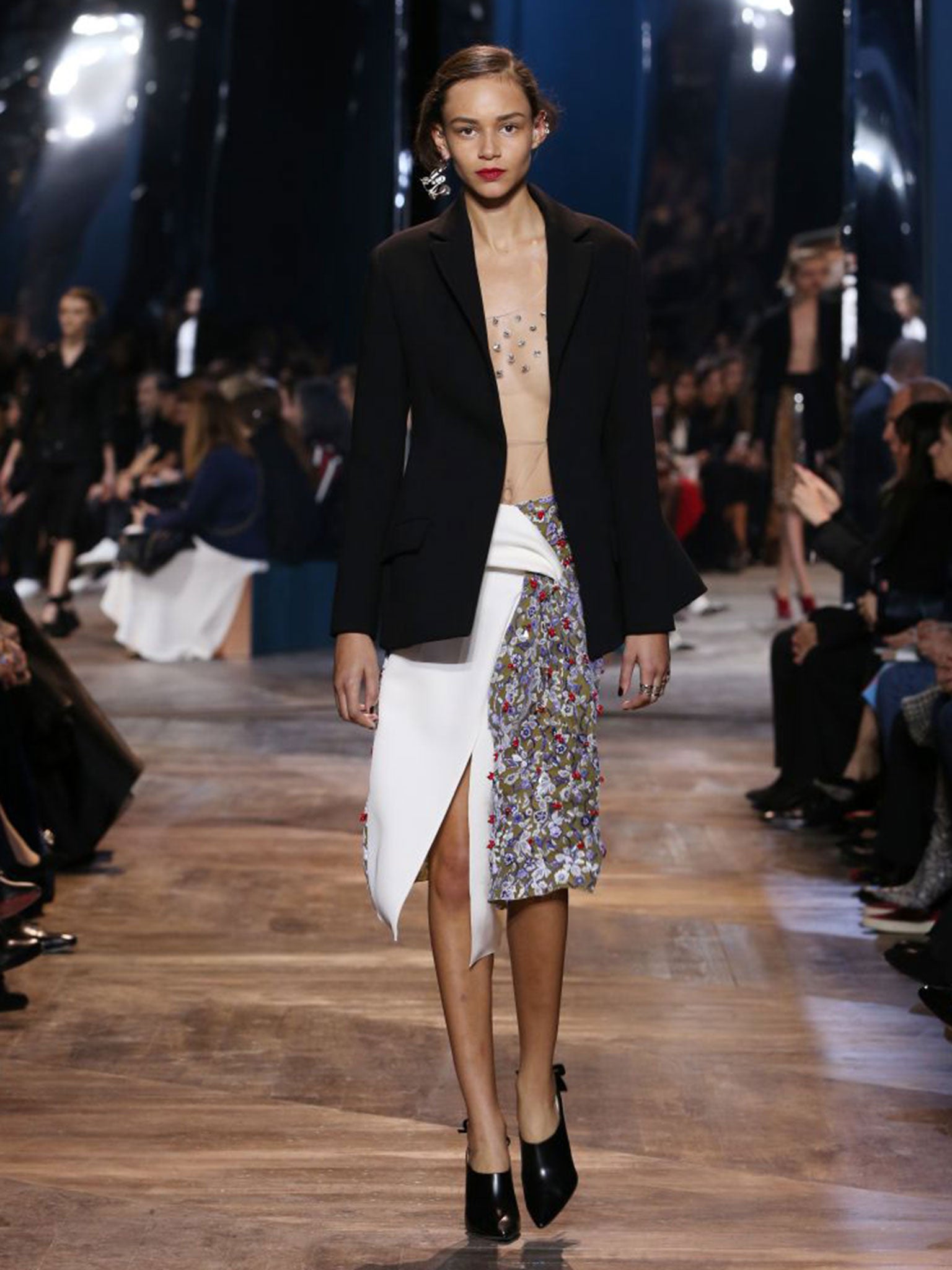
Like Dior, Chanel sells. Do Chanel clients care if the elaborate wooden set of the show will be mulched to compost in reflection of designer Karl Lagerfeld's current fad for sustainable style? Of course they don't. They care if the clothes look good, which Lagerfeld's pumpkin-shaped sleeves, hobble skirts and putty-palette of beige, did. The eco-warrior posturing was a gimmick for Lagerfeld to latch on to and give his fashion a frisson of the new. Everyone's fixated on the climbing climate (2015 was the warmest year on record) – Lagerfeld's environmentally friendly wooden beading, cork fragments and "natural" colours were a reflection of that universal obsession, using the talking point to get us talking about his clothes. Nothing deeper.
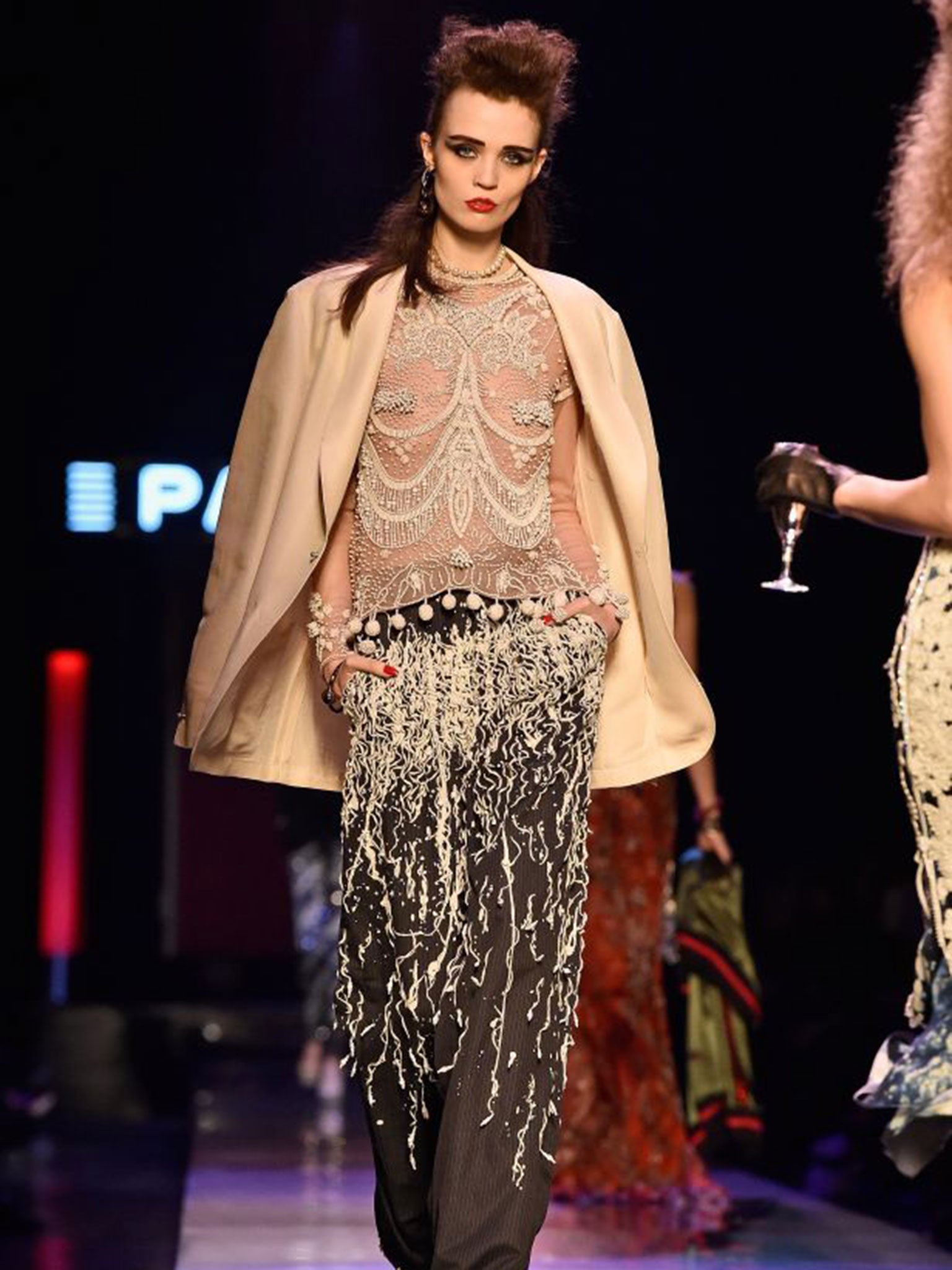
Jean Paul Gaultier's collection was an ode to Paris past. It was punk, rather than Piaf – Gaultier, incidentally, has tackled both of those ideas in collections dedicated to La Ville Lumière before. However, following November's terror attacks and the first anniversary of the Charlie Hebdo shooting, there was a special note of poignancy, even under the party atmosphere. Gaultier took the nightclub Le Palace as his inspiration, reviving the styles and resurrecting a few of its key figures: I sat in a section devoted to Paloma Picasso; across the way were ones dedicated to Paquita Paquin and Edwidge, queen of punk, who manned the door. In between marched the collection, the wide-legged wide-striped pyjamas, pillbox hats, beaded robes and trailing gowns, an ode to Parisian style, something Gaultier does better than anyone else. Recycled but still resonant.
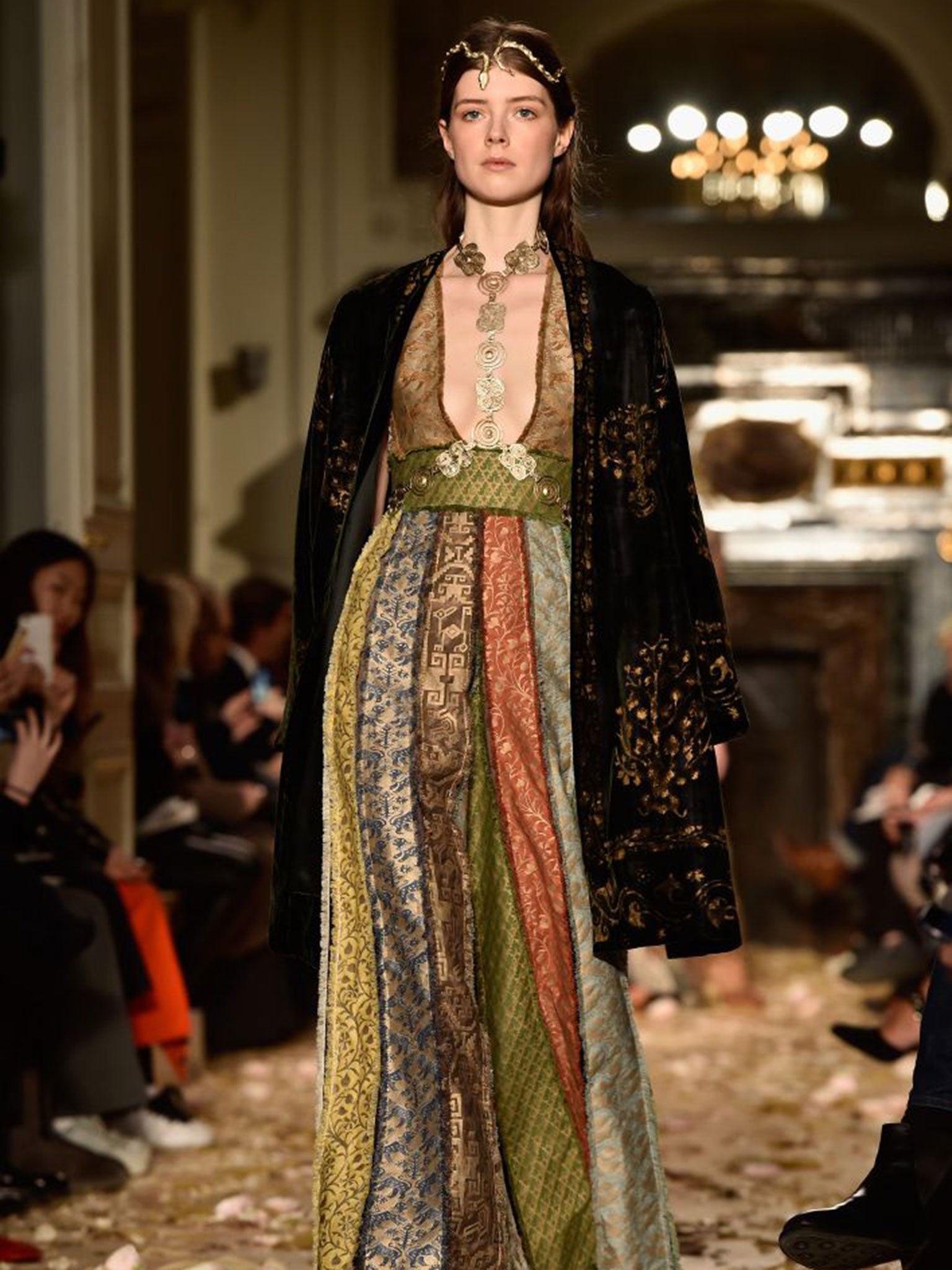
Recycling brings us, always, to Maison Margiela – and to John Galliano. Both have constantly plucked from the past to reconfigure the present, albeit to very different effect. They're now unlikely bedfellows – Galliano is a year into the gig. What was even more unlikely was how much of the present could be found in Galliano's plucking from Margiela's past. That's what this partnership amounts to: Galliano selecting styles to explore, then spinning them in his inimitable, theatrically overblown style to make them new again.
This time, however, Galliano's choices intersected neatly with an undercurrent of style in the ascent, meaning that, as opposed to standing alone and out of time, these slotted more neatly into the current fashion conversation than any other clothes at the couture. Perhaps that's because Margiela has come round to being a favoured reference-point for yet another generation. Perhaps it's because designers are elected for the hand-made, warts and all, over and above machine-manufactured flawlessness (oddly, just as the Manus x Machina exhibition is due to launch at the Metropolitan Museum in New York).
Perhaps it's just because this was a great Margiela collection. No making do, but lots of mending. Galliano's reputation is mended. He's once again on top form.
Join our commenting forum
Join thought-provoking conversations, follow other Independent readers and see their replies
Comments
Bookmark popover
Removed from bookmarks